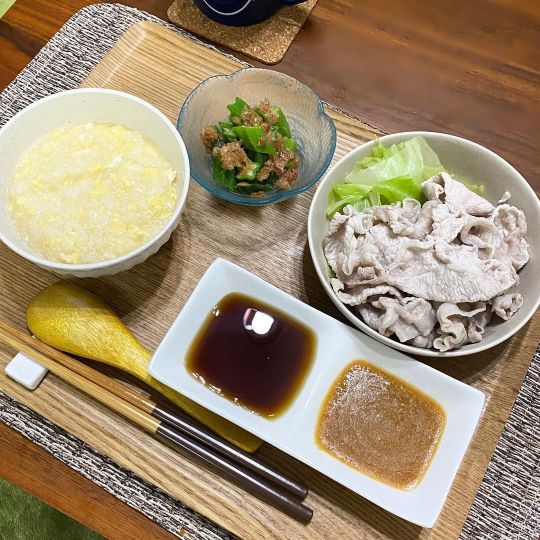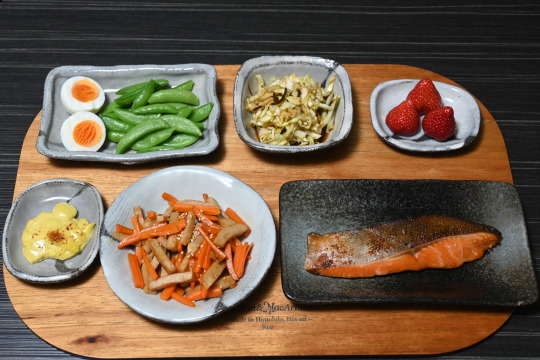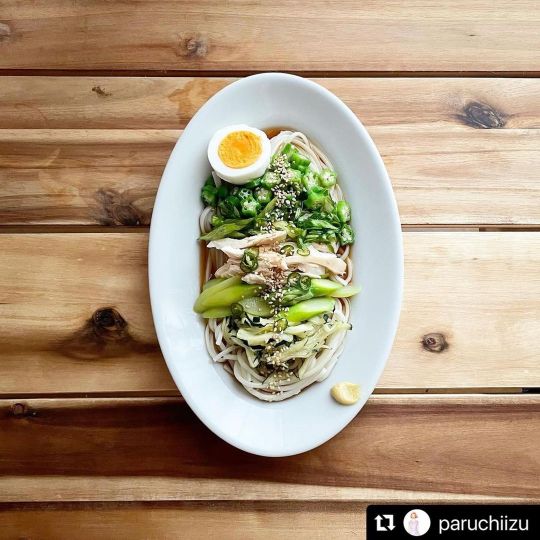#茹で卵
Photo

昼ごはんは、なめこうどんをいただきました。 #昼ごはん #おうちごはん #うどん #なめこうどん #讃岐うどん #茹で卵 #ゆでたまご #七味唐辛子 #ねぎ #ねぎ増量 #なめこ https://www.instagram.com/p/CpoihThLqzt/?igshid=NGJjMDIxMWI=
5 notes
·
View notes
Photo

本日の #カリメロ剥き ♪ ポイントは、 #どれだけ目深に被れそうか? という点ですね。 @albaldan_ #モーニング #モーニングセット カリメロ #茹で卵 #剥きやすい卵 🥚 #喫茶 #アルバルダン #喫茶店 #園田 #園田駅前 #阪急園田 #園田カフェ #カフェ #尼崎 #尼崎市 #尼崎の喫茶店 (アルバルダン) https://www.instagram.com/p/CkZm6sJSG5Y/?igshid=NGJjMDIxMWI=
0 notes
Photo

妻とモーニングサービス¥450円でゆっくりしてます☕️ #妻 #モーニング #サービス #モーニングカフェ #ゆっくり #して #ます #パン #トースト #ゆで #茹で #タマゴ #たまご #卵 #茹で卵 #ゆで卵 #大分 #店 #大分店#星乃珈琲店大分店 #モーニングサービス #コーヒー #星乃珈琲店 #大分市 (星乃珈琲) https://www.instagram.com/p/CkF9dw9Lm_P/?igshid=NGJjMDIxMWI=
#妻#モーニング#サービス#モーニングカフェ#ゆっくり#して#ます#パン#トースト#ゆで#茹で#タマゴ#たまご#卵#茹で卵#ゆで卵#大分#店#大分店#星乃珈琲店大分店#モーニングサービス#コーヒー#星乃珈琲店#大分市
0 notes
Photo

レシピ(太口そうめん) #Repost @paruchiizu #今日のそうめん 【1140日目】 卵ときのこのそうめんグラタン * そうめんグラタンの美味しい季節になってきた〜🥚🍄🧀 #ゆで卵 #茹で卵 #そうめんグラタン #グラタン #gratin #そうめん #素麺 #手延べそうめん #somen #noodles #真砂喜之助製麺所 #毎日そうめん #そうめんアレンジ #素麺アレンジ #そうめんスタグラム #麺スタグラム #めんすたぐらむ #food #japanesefood #japanesenoodle #Z30 #meets_nikon #太口 http://kinosuke.tumblr.com https://www.instagram.com/p/CkDQJqQv1zj/?igshid=NGJjMDIxMWI=
#repost#今日のそうめん#ゆで卵#茹で卵#そうめんグラタン#グラタン#gratin#そうめん#素麺#手延べそうめん#somen#noodles#真砂喜之助製麺所#毎日そうめん#そうめんアレンジ#素麺アレンジ#そうめんスタグラム#麺スタグラム#めんすたぐらむ#food#japanesefood#japanesenoodle#z30#meets_nikon#太口
0 notes
Photo

372杯目に、#ポークカレー 🍛に、#茹で卵 と、#半熟卵 と、#スクランブルエッグ を!(^o^)丿 #coco壱 #カレー #あつぎ飯 #厚木人 #熱気人 #あつぎんちゅ #niceatsugi #niceatsugi2022フォトコン #あつぎのしゃしん50th #厚木市 #本厚木 #住みたい街 #厚木 #住み続けたい街 #すべてはこどもたちのために #不動産ソムリエ #こども食堂 #よろず相談所 #セカンドオピニオン (CoCo壱番屋) https://www.instagram.com/p/ChvnSEVPBjs/?igshid=NGJjMDIxMWI=
#ポークカレー#茹で卵#半熟卵#スクランブルエッグ#coco壱#カレー#あつぎ飯#厚木人#熱気人#あつぎんちゅ#niceatsugi#niceatsugi2022フォトコン#あつぎのしゃしん50th#厚木市#本厚木#住みたい街#厚木#住み続けたい街#すべてはこどもたちのために#不動産ソムリエ#こども食堂#よろず相談所#セカンドオピニオン
0 notes
Text

2022.9.20
◯メニュー
サラチキとゆで卵とプチトマトのサラダ
甘唐辛子の焼き浸し
ごはん
2 notes
·
View notes
Photo

昨日のディナー🍴 ・ #夏バテメニュー #夏バテ解消 #体調不良のため ・ #お粥 #卵粥 #オクラの梅和え #冷しゃぶ #豚しゃぶ #茹でキャベツ #ポン酢 #キャンティドレッシング ・ #おうちごはん #うちごはん #自炊生活 #自炊 #簡単ごはん #手抜きごはん #時短ごはん ・ #美味しゅうございました ♡ #Japanesefood #food #instafood #instafoodie #foodgasm #foodpics #yummy #foodstagram #foodporn #dinner #晩ごはん https://www.instagram.com/p/Cg2knktPxjw/?igshid=NGJjMDIxMWI=
#夏バテメニュー#夏バテ解消#体調不良のため#お粥#卵粥#オクラの梅和え#冷しゃぶ#豚しゃぶ#茹でキャベツ#ポン酢#キャンティドレッシング#おうちごはん#うちごはん#自炊生活#自炊#簡単ごはん#手抜きごはん#時短ごはん#美味しゅうございました#japanesefood#food#instafood#instafoodie#foodgasm#foodpics#yummy#foodstagram#foodporn#dinner#晩ごはん
0 notes
Photo

朝ご飯♪ ・アレンジ卵かけご飯:ご飯、生卵、納豆、塩昆布、しそわかめふりかけ、醤油 ・茹でたてのとうもろこし、塩 ・お冷や しっかり頂きました♪ #朝ご飯 #アレンジ卵かけご飯 #茹でとうもろこし https://www.instagram.com/p/CfLAm-dP9gs/?igshid=NGJjMDIxMWI=
0 notes
Photo

農林水産省の紹介する「時短! ゆで卵を茹でずに作る方法」が話題に→使用する水の量が少ないため、お湯を沸かす時間が省けるのが特徴 黄身のかたさは蒸らし時間で調節 - Togetter
166 notes
·
View notes
Text

お魚定食。
・鯛の昆布蒸し
・だし巻き卵
・茹でブロッコリーとミニトマト
・里芋と大根と人参の味噌汁
・白米と胡麻昆布
・シャインマスカット
61 notes
·
View notes
Text



焼うどんに、茹で卵。
Stire_fried udon noodles and Boiled egg.
35 notes
·
View notes
Photo

昼ごはんは、なめこうどんをいただきました。 #昼ごはん #おうちごはん #うどん #なめこうどん #ゆでたまご #茹で卵 #なめこ #ねぎ #七味唐辛子 https://www.instagram.com/p/Cpl8_4gLO-4/?igshid=NGJjMDIxMWI=
3 notes
·
View notes
Quote
日本語では一つの名前で表されるのに英語だと二種類以上あるもの
[B! 増田] 日本語では一つの名前で表されるのに英語だと二種類以上あるもの
たとえばつぎのようなもの、というお題。
亀 - Turtle (海亀)、tortoise (陸亀)
ワニ - Alligator, Crocodile
- - - - - - - - - - - - - - - -
はてなブックマークがトリビアの披露大会になっていて、知識が集まってる。
逆パターンも
「英語では一つの名前で表されるのに日本語だと二種類以上あるもの」
- - - - - - - - - - - - - - - -
日本語では一つの名前で表されるのに英語だと二種類以上あるもの
聞く:hear, listen
見る:see, look, watch
海:sea, ocean, waters, marine(海の)
仮説:hypothesis, assumption
罪:crime, sin
(「罪と罰」の罪は以外なことにcrimeのほう *)
英語では一つの名前で表されるのに日本語だと二種類以上あるもの
Museum:美術館、博物館
Requirement:要件、要求
Space:空間、宇宙
- - - - - - - - - - - - - - - -
「総称だけ存在して、細かな違いを呼び分けない」ものと、「総称は無いが、個々の細かな呼び分けだけある」ものに分けられるかも。
総称:亀 / 個々に:Turtle (海亀)、tortoise (陸亀)
総称:皿 / 個々に:dish、plate、saucer
総称:brother / 個々に:兄、弟
- - - - - - - - - - - - - - - -
秋のAutumnとFallのパターンは、意味もニュアンスも同じで、言い方が違うだけかな。
Fallが「秋」「落下」の2つの意味。
- - - - - - - - - - - - - - - -
仕事(taskとworkとjob)
槍:スピア、ランス、ジャベリン、トライデント。/悪魔:デビル、デーモン
managementもadministrationも(場合によってはcontrolも)「管理」、featureもfunctionalityも「機能」
一番有名なのはネズミ(mouse, rat)だと思ってた。他にもphantom/ghost、coast/beach、house/home、college/university、space/universe、earth/globeとか。厳密には意味が違うんだろうけど。
カラスのravenとcrow。
好き(loveとlike)/時計(clockとwatch)/サイン(sign、signatureとautograph)
言語とその話者の世界観が相関することは言語的相対論と呼ばれる。国がcountry, nation, stateに分かれるのは島国と多民族大陸国との違い。https://gijodai.jp/library/file/kiyo2011/yoshitaka_sato.pdf
ApeとMonkey
AlligatorとCrocodileの違いは、口を閉じたときに下の歯が見えるかだって伊豆で習った。
ちょっと違うが、"将来に対する希望"と、"睡眠中の幻覚体験"を日本語でも英語でも「夢 dream」という一語で表現するのは全くもってピンと来ない。
麦は日本語でも大麦・小麦・ライ麦・エン麦は区別はしてるけど、英語ではbarley wheat rye oatで「麦」に対応する単語がないのよね
アプリ開発で Apple の審査担当とやり取りする際「修正」の言い方が複数あって fix, correct, modify, revise, alter などを使い分けてくるので毎回意図を汲みとれてるか不安になる。(まあ日本語にも修正の類語いっぱいあるけど)
「毒」 poison / venom / toxin
romanceとnovel。romanceは通常騎士道物語など物語と訳されるのだけど、小説と訳されているときもある。
CollegeとUniversity
試験: 学力・知識を問う→examination,quiz,test 評価や実験→experiment 試みる→trial▼ただ「試験」で纏められるだけで日本語でも「考査」「実験」「試行」と分けて書くこともできるが。
自由(Liberty,Freedom)。契約などの法律上のやり取りが単語を増やした気もする。
紫→purple,violet
夫、旦那、亭主、主人→husband
足の指(toe)もfinger じゃない
日本語において、髭は全て「髭」で、生えてる箇所を限定する場合は「顎髭」や「頬髭」などと熟語で表現するが、英語ではそれぞれの箇所に単語がある。
リス:squirrel、chipmunk
馬車がとてもややこしくて面倒くさい / 辻馬車 cab, hansom 荷馬車 (horse)cart, wagon, (horse-drawn)carriage, horse and buggy 駅馬車 stagecoach 二輪馬車 curricle, tilbury ,jaunting car ,jinker 馬二輪戦車 chariot まだまだいっぱい…
今話題のsexとgender
政治家 politician / statesman たまご egg / spawn / roe ちなみに逆もあってegg 卵 / 玉子
この手の単語なら調理法が多い。アメリカは焼く文化だ。肉、パン、物で違う(Grill、Bread、Burn、BBQなんてのも)一方で日本は煮る文化だ。煮る、茹でる、炊く、煮込む。英語はBoil、あるいは残り全てはCookだ。
おじさんとおばさん、日本語でもこだわりがある場合には年上か年下で漢字が違うらしい。中国語では母方と父方で別の名前になる。
- - - - - - - - - - - - - - - -
知里真志保によれば、大和民族が川の始まりと考える「みなもと(源)」をアイヌ語では「川の終り」と言うのだという。つまりアイヌは川を海の方から見ているのだと。
コメントで日本語は部位に依らず「髭」だけってあるけど、いちおう漢字だと「髭(くちひげ)」と「鬚(あごひげ)」と「髯(ほおひげ)」で使い分けられる。発音はぜんぶ「ヒゲ」だけど……
- - - - - - - - - - - - - - - -
言語学で言うところの有標と無標も関係してそう。
作家:男女問わず作家の全般、女流作家:作家の中で女性の場合
標識 (言語学) - Wikipedia
英語のlionは雄雌どちらのライオンも表すが、lionessは雌だけである。前者が無標で後者が有標である。
130 notes
·
View notes
Photo



雁木(日本酒/純米酒 PROTOTYPE 試験醸造 R4BY 仕込80号)、サーモンの酒粕味噌漬け焼き、ソーセージと人参のきんぴら、ゆで卵と茹でスナップエンドウ(七味を振った自家製マヨネーズ添え)、塩昆布とキャベツのサラダ、いちご。
Gangi(Japanese Sake) & Grilled Salmon Seasoned with Miso Sakekasu Dinner - May 2023
Previous Post:
https://chuck-snowbug.tumblr.com/post/716873936040869888
78 notes
·
View notes
Photo

レシピ(太口そうめん) #Repost @paruchiizu ・・・ #今日のそうめん 【1069日目】 みどりの冷やし中華そうめん * オクラ、セロリ、アスパラ、ズッキーニ、タレに青唐辛子。 #冷やし中華 #冷やし中華はじめました #オクラ #セロリ #アスパラ #ズッキーニ #青唐辛子 #茹で卵 #そうめん #素麺 #手延べそうめん #somen #noodles #真砂喜之助製麺所 #毎日そうめん #そうめんアレンジ #素麺アレンジ #そうめんスタグラム #麺スタグラム #めんすたぐらむ #food #japanesefood #japanesenoodle#太口 http://kinosuke.tumblr.com https://www.instagram.com/p/CgRO1rivget/?igshid=NGJjMDIxMWI=
#repost#今日のそうめん#冷やし中華#冷やし中華はじめました#オクラ#セロリ#アスパラ#ズッキーニ#青唐辛子#茹で卵#そうめん#素麺#手延べそうめん#somen#noodles#真砂喜之助製麺所#毎日そうめん#そうめんアレンジ#素麺アレンジ#そうめんスタグラム#麺スタグラム#めんすたぐらむ#food#japanesefood#japanesenoodle#太口
0 notes
Text
「V〜方」と「V方法」の違いは何?
what’s the difference between 「V〜方」 and 「V方法」?

hi everyone! today i wanted to make a post explaining an intermediate grammar concept about the two different ways to say “way/method” with a verb in japanese! just as quick note, i won’t be glossing most of the kanji i use in this post, so be sure to use jisho or turn on rikaikun/chan if you need help reading. without further ado, 行こう!
V〜方(かた) = “how to V”
first, let’s learn how to add 〜方 to a verb:
start with plain present (dictionary) form
create 〜ます form
remove 〜ます and add 〜方
let’s try it with an ichidan verb (食べる) and a godan verb (作る).
食べる/作る
食べます/作ります
食べ方/作り方
easy, right? make sure you’re brushed up on your godan conjugation rules! now, how can we use these new forms?
first, it’s important to note that we’ve transformed the verb into a noun by adding 〜方. that means that instead of を, which attaches before verbs, V〜方 is often preceded by の.
❌ 石鹸(せっけん/soap)を作り方
⭕️ 石鹸(せっけん/soap)の作り方 = how to make soap
週末は石鹸の作り方をググって台所をひどく散らかしちゃった。 = this weekend so i googled how to make soap and made a huge mess of the kitchen.
in the above example, V〜方 refers to the actual, physical manner of doing something (in this case, making soap). you can think of it like an instruction manual or a recipe.
日本人の友達に箸の使い方を教えてもらった。 = i learned how to use chopsticks from my japanese friend.
卵の茹で方、わかってるの? = do you know how to boil eggs?
with する verbs, のし方 is used with the verbal noun. this means の is used twice in the phrase:
❌ 車の運転し方がわからない。
⭕️ 車の運転のし方がわからない。 = i don’t know how to drive a car.
pretty straightforward so far! let’s add one more thing to this topic: V〜方をする.
V〜方をする = “to V in a certain way”
this phrase is useful in describing the particular ways people perform certain actions. by using an adjective, ような, or a noun + の, you can characterize their V〜方.
林田先生は厳しい教え方をする。 = hayashida-sensei has a strict way of teaching.
誰にもわかるような書き方をした本だ。 = the book is written so anyone can understand it.
吉田くんは乱暴(らんぼう)な運転のし方をする。 = yoshida-kun has a reckless way of driving.
getting the hang of it? let’s move onto V方法 now.
V方法(ほうほう) = “a way to V”
V方法 gets a little less literal and a little more conceptual than V〜方. let’s look at how to form it.
start with plain present (dictionary) form
add 方法 to the end
that’s it—even easier than V〜方! in japanese, when you put a plain form verb before a noun, you’re kind of using that verb like an adjective; so this time, the whole phrase has become a noun phrase.
let’s see some examples of V方法:
毎日勉強することが試験に備える(そなえる)方法だと思っている人は多い。 = many people believe studying every day is the way to prepare for exams.
困難(こんなん)から逃げる方法はない場合もある。 = in some cases there is no way to escape hardship.
do you notice how the feeling here is less “instruction manual” and more “means to an end”? it’s a subtle difference, but it’s there. compare these two sentences:
この料理の食べ方は何?お箸で? = how do you eat this dish? with chopsticks?
健康を保って(たもって)食べる方法は何? = what’s a way to eat healthy?
the context for each is a little different, but the nuance of 食べ方 vs. 食べる方法 comes across clearly. the former addresses the physical manner in which a food item is eaten (see, for example, this article about okonomiyaki). the latter, on the other hand, refers to the concept of eating with a goal in mind (i.e., staying healthy). in a word, the difference is this: V〜方 implies a specific/correct way to perform an action, while V方法 expresses a method to attain some goal. make no mistake, there is some overlap between the two—but there may always be a slightly different feeling that comes with each.
and that’s that on that! just kidding, i’m sure there are way more resources out there on this topic, and it’s always a great idea to ask native speakers what they think. as always, feel free to shoot me an ask with any questions or let me know if you found any mistakes! お疲れ様 and またね!! 💮

sources:
dictionary of intermediate japanese grammar (日本語文法辞典中級編) by seiichi makino and michio tsutsui
how to use 方 by maggie sensei
some sentences adapted from jisho
111 notes
·
View notes